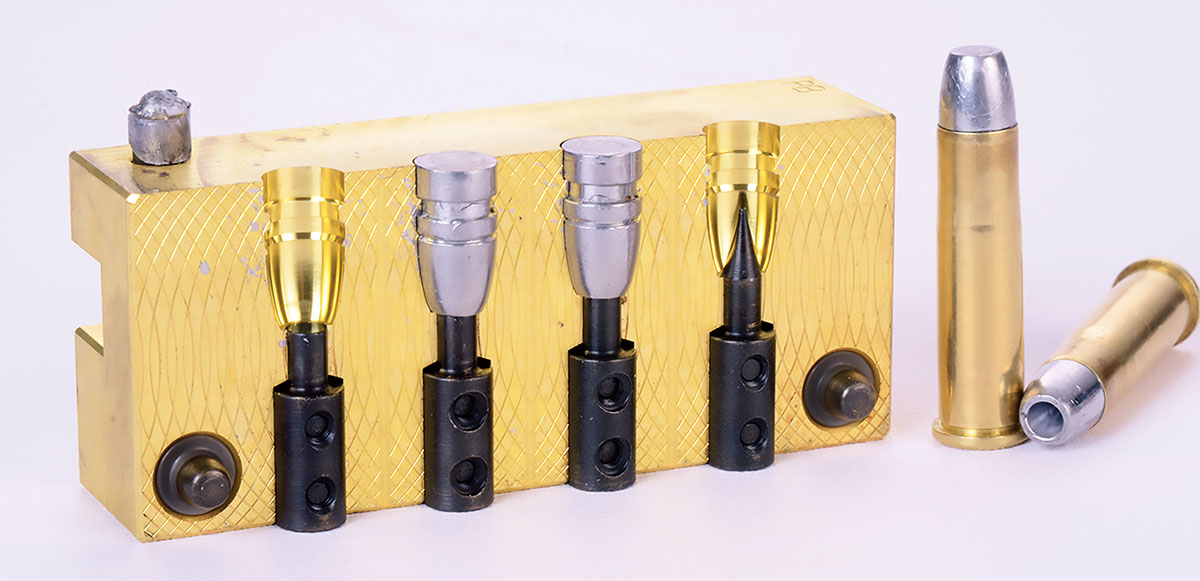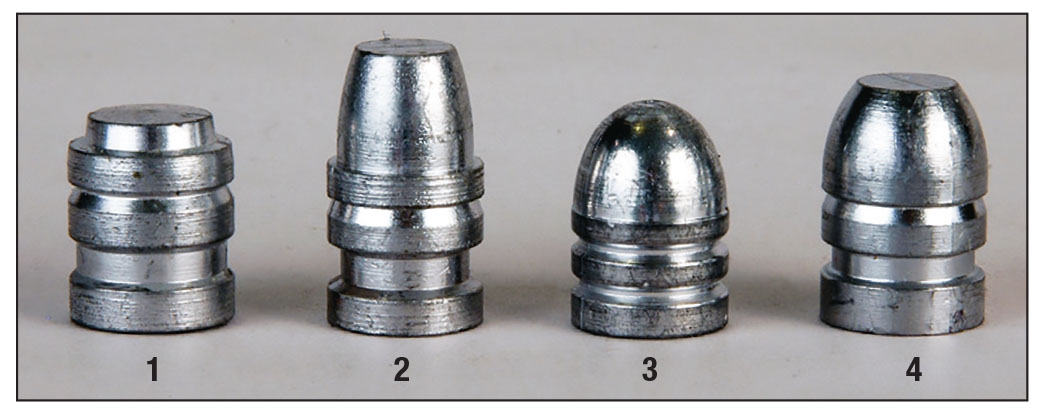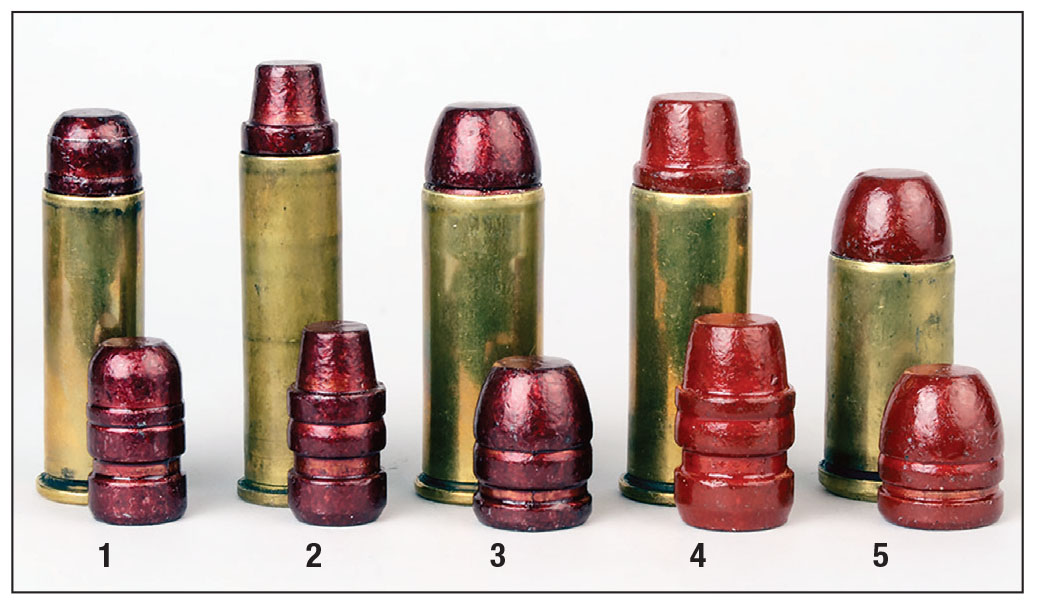Mike’s Shootin’ Shack
Changes in Cast Revolver Bullets
column By: Mike Venturino - Photos by Yvonne Venturino | August, 24

Things have really changed in regard to revolver cast bullets since I poured my first one. Back in the mid-1960s, from my vantage point, it seemed that the vast majority of revolver shooters cast their own bullets. Nowadays, I’d bet that sixgun shooters casting their own bullets are in the minority. One reason is because in 1968, the federal government decreed that bullets (and gunpowder) couldn’t be shipped to individuals. Then, in 1986, that rule was reversed and a plethora of commercial bullet casters sprouted around the nation.
On the whole, my experience with commercial cast bullets has been good with the only complaint being about the hard bullet lubes. Admittedly, I can see no other recourse. Bullets to be shipped usually come in cardboard boxes holding about 500 rounds. They jumble about during their travels resulting in hard lubricant often falling out of the grooves. Conversely, bullets shipped loosely with soft lubes are a major headache. The lube doesn’t fall out; it just ends up everywhere except in the grooves where it belongs.
A cure for this lube problem has been introduced in recent years. It’s called coated bullets. That coating is literally baked on; meaning no lead touches the barrel. Thus far, the only coated ones I’ve tried came from Missouri Bullet Company. I fired them from 357 Magnum to 45 Colt in machine rest testing in revolvers. Twenty-five-yard groups ranged from pleasing to very good. Shooters can buy the ingredients and coat their own cast bullets but I’m not good at baking, so any coated bullets shot through my guns will come from commercial casters.

Why does bullet hardness matter so much? It is due to the word obdurate, which is loosely defined means to swell up to fill space. Putting it roughly, if the base of a hard bullet does not get slapped with enough force, propellant gases leak by, in turn leaving what we informally call leading. That’s alloy plating and/or particles left in a barrel. With a softer bullet, a milder slap swells the base and seals the barrel so gas cannot pass. Nothing is perfect – sometimes leading will occur either way – depending on barrel quality, lubricant and bullet sizing diameter.
Ironically, my experience stemmed from participation in the BPCR Silhouette game. Early on, I mixed linotype and wheel weights 50/50 for my cast bullets. They shot well enough but deleading the barrel after every relay was necessary. After switching to 1:20 tin-to-lead alloy (10 BHN) my lead-removing cloths seldom get used. Then, I discovered that a 1:20 blend is fine for revolver bullets up to about 1,000 feet per second (fps). Not many magnum revolver rounds get fired at my age, but if needed, there are plenty of ingredients on hand to mix up alloys of suitable BHN. (As an aside, I’d like to mention that the Missouri Bullet Company does handloaders a favor by labeling its packaging as to its bullets’ BHN.)
Here is another change in bullets. Back then, semiwadcutters (SWC) were all the rage. If you weren’t shooting SWCs you were out in left field. The thought was that wadcutters were for paper shooting and roundnose bullets were useless on live tissue. What I discovered over the years was that SWCs shot just as accurately as wadcutters. Roundnose bullets indeed didn’t do well on live game but were fine for practice loads. Most everyone wanted the destruction of live tissue-used JHPS. But get this: the archaic roundnose/flatpoint invented for equally archaic lever guns could do it all. That’s my favorite design of cast revolver bullet now.

However, those companies’ selections are “locked in.” That means they only stock their own designs. To my great pleasure, there are now a plethora of custom mould makers willing to lathe cut pretty much any customer’s ideas. The custom makers with whom I’ve dealt are Hoch Molds, Steve Brooks Molds, Accurate Molds, Buffalo Arms, Old West Molds, Arsenal Molds and MP Molds. (That latter one is located in the country of Slovenia but their delivery service is great.)
As far as I know, Lee pioneered aluminum mould blocks. Also, some custom makers will cut moulds using that material along with iron and brass. Plus, the number of cavities in a set of blocks varies. I started with a single cavity Lyman mould and swore, “never again.” For revolver bullets, two cavities barely satisfy. For me, three cavities rule. One innovation that fascinates me is MP Molds’ dual purpose versions in which either hollowbase or hollow-cavity bullets can be produced with the same set of mould blocks. For instance, with their 32-20 four-cavity brass blocks, using a set of pins, I cast three cavities as solids (105 grains) and one cavity as hollowpoints (100 grains). But that can all be rearranged as one sees fit.
Despite the ups and downs of bullet casting all these past decades, I’m happy with the status quo.


